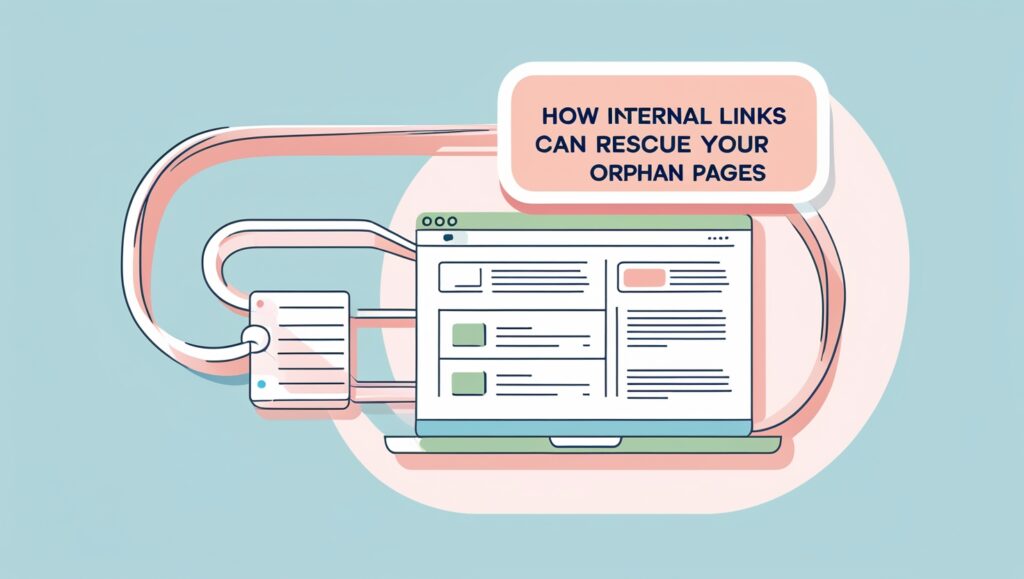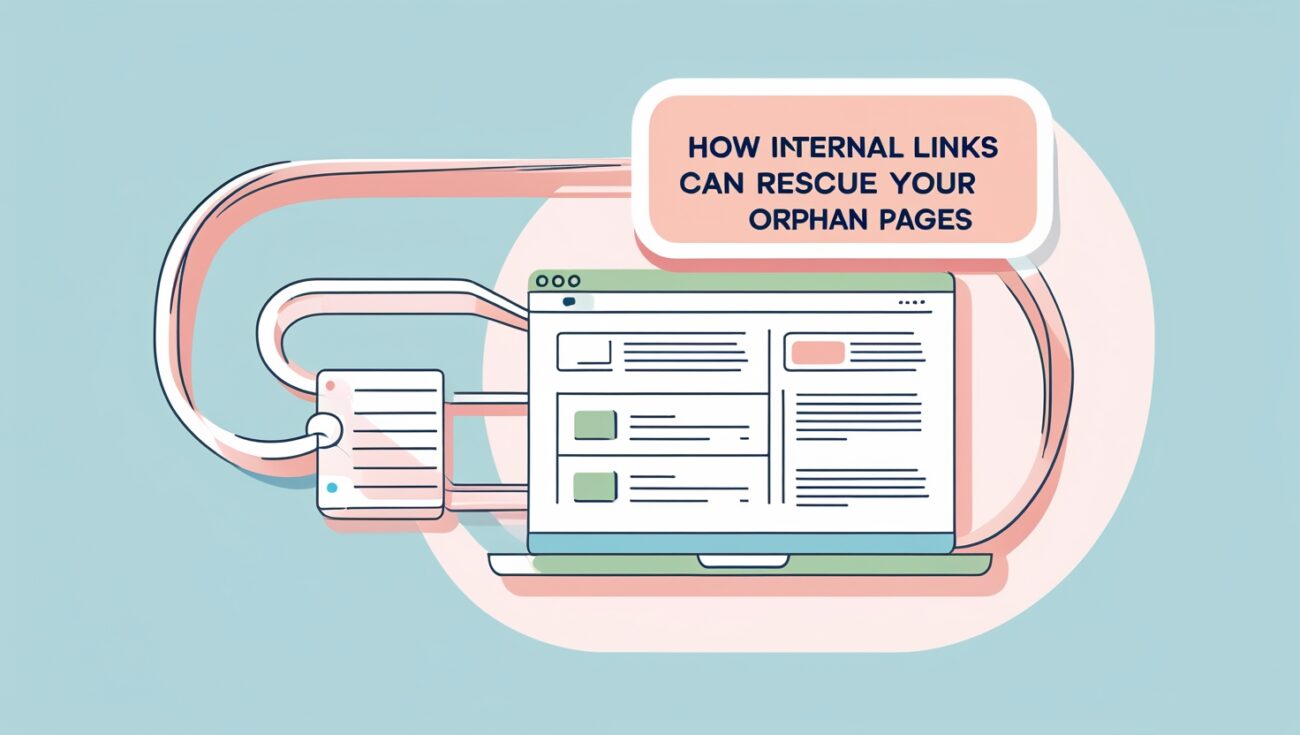How Internal Links Can Rescue Your Orphan Pages
It’s one of the most frustrating things in SEO. You spend hours creating a great piece of content—a detailed guide, a new product page, or a thoughtful case study—you publish it, and then… nothing. It’s like it never even existed. You feel a pang of dread as you realize you have an orphan page on your hands.

Table of Contents
An orphan page is a page with no internal links pointing to it. It’s lost, disconnected from the rest of your website, and as a result, it can’t be found by search engines or your users. I have been there myself, discovering a valuable, forgotten article buried deep in my site’s archives. I’ve since learned that internal linking is the definitive, high-impact solution to rescuing these pages from oblivion.
What is an Orphan Page and Why is it a Problem?
An orphan page is any page on your website that has no internal links pointing to it. Think of it like a room in a house that has no doors leading to it.
- The Problem: Search engine bots, like Googlebot, crawl your website by following links. If a page has no links pointing to it, the bot will have a very hard time finding it. This is a critical problem because if a page cannot be crawled and indexed, it cannot rank. An orphan page might as well not exist to a search engine.
Even if you have the page in your XML sitemap, it’s not a replacement for a proper internal linking structure. While a sitemap can aid in discovery, a page without internal links receives no link equity from the rest of your site, which is crucial for ranking.
Internal Linking as the Ultimate Rescue Mission
Rescuing an orphan page is a simple yet incredibly powerful SEO fix. All it requires is a strategic internal link.
- Benefit #1: It Makes the Page Discoverable. The simple act of adding one internal link to an orphan page makes it discoverable by Google’s crawlers. When a crawler visits a well-linked page, it will follow that new link and discover your forgotten content, making it eligible to be indexed and ranked.
- Benefit #2: It Passes Authority. A link from an authoritative page, like your homepage or a popular blog post, passes valuable link equity to the orphan page. This is the boost it needs to start ranking. It’s like giving your lost page a vote of confidence from the most important pages on your site.
The Orphan Page Rescue Playbook
Action 1: Find All Your Orphan Pages
The first and most important step is to find every single orphan page on your site. For most websites, especially those with hundreds of pages, this is impossible to do manually. You need a tool that can crawl your site and compare that list of URLs to the pages in your sitemap or other sources. A tool can find all of your orphan pages in minutes so you can start rescuing them immediately.
Action 2: Link from Authoritative Pages
Once you have a list of your orphan pages, you need to decide which ones are worth saving. For your most valuable content, find your high-authority pages and link to the orphan page from them. This is the fastest way to get them crawled and to pass the authority they need to start ranking. Discover how a smart internal linking tool can identify your authoritative pages for you.
Action 3: Weave the Page into Your Content
Go through your existing content and find opportunities to add a relevant, contextual internal link to the orphan page. For example, if you have an orphan post about “how to prune roses,” find all of your articles about gardening and add a contextual link to it. This ensures the page is part of a logical, interconnected website structure that Google loves.
The Tool That Automates the Rescue
Manually finding and fixing orphan pages is a monumental waste of time and energy. It’s the kind of tedious, high-labor work that should be automated. A smart tool can automatically identify broken links and orphan pages and provide you with a clear, actionable list of fixes. Ready to stop wasting time and start building a website that’s optimized for both search engines and humans? Discover how Linkbot can help you.
Conclusion: Don’t Let Your Valuable Content Get Lost
Identifying and rescuing your orphan pages is one of the quickest, highest-impact SEO fixes you can make. It’s a simple process that can instantly improve your site’s crawlability, authority, and ranking potential. By taking control of your internal linking, you can save valuable content from being lost forever.
My journey taught me that a major mistake is seeing SEO as a mystery. By implementing a smart, corrective approach to my website, I made the mental shift from being a spectator to an active participant in my website’s success. This simple realization took the overwhelm out of SEO and turned it into a series of logical, manageable steps that I could control.
The long-term, compounding effect of fixing these mistakes is what makes it so powerful. Each time you add a thoughtful, relevant link, you are not just performing a task; you are building your website’s authority, one link at a time. These small, consistent improvements add up to a significant competitive advantage over the long term, making your website an increasingly powerful asset.
I can say from personal experience that there is a special kind of satisfaction that comes from seeing a direct correlation between a new link and a ranking boost. It’s the feeling of taking a tangled mess and organizing it into a clean, logical network. The result is a website that just feels better to navigate, for both users and the people managing it.
A clean internal link profile also has a huge impact on your website’s overall trustworthiness and authority. When a user or a search engine bot lands on your page and sees a clear network of interconnected, relevant articles, it signals that you are a serious, comprehensive resource on the topic. This kind of professional organization is exactly what Google looks for.
The most important part of this foundational skill is building a consistent habit of linking. It’s not about a single audit and then forgetting about it. A good website is a living thing, and it needs regular maintenance to ensure your internal links stay clean, which is a key part of long-term SEO success.
I felt like I was finally in the driver’s seat of my SEO. For years, I had relied on external factors, which felt like I was giving up control of my SEO destiny. But by mastering a simple task like building my internal links, I was proactively building my site’s authority from the inside out, on my own terms, which was an empowering and exciting feeling.
By implementing a strategy that serves both SEO and conversions, you are also directly addressing Google’s E-E-A-T framework. You are demonstrating expertise by creating topical clusters, you are showing authority by linking from strong pages, and you are providing a better user experience, which is a key part of what Google looks for in a trustworthy website.
I’ll never forget the first time I applied my new internal link strategy to a page that was struggling to rank, and it shot up in the search results almost overnight. This was my “aha” moment. I realized that a strategic, well-placed link from a high-authority page was far more powerful than I ever thought possible.
One of the greatest benefits I got from using an automated tool to manage my link profile was the “to-do” list it provided. Instead of being overwhelmed by the sheer size of my website, the tool gave me a prioritized, actionable list of fixes to make. It transformed a monumental, frustrating task into a series of manageable steps that I could tackle in just minutes.
It’s crucial to understand the difference between a simple, generic link and one that’s part of a strategic, mapped plan. A simple link is a one-off connection. A link that’s part of a plan is a purposeful part of a larger network, designed to pass authority and guide a user. The latter is far more powerful.
Ultimately, mastering internal linking is a simple but powerful strategy that transforms a website’s foundation. It’s a low-cost, high-impact fix that can instantly improve your site’s health and SEO performance. It’s the kind of foundational SEO work that every website owner should prioritize.
My final piece of advice is to not be intimidated. Don’t worry about the high cost of manual labor; just focus on making your website a better place for your readers. You will be amazed at the progress you make and the results you can achieve.

